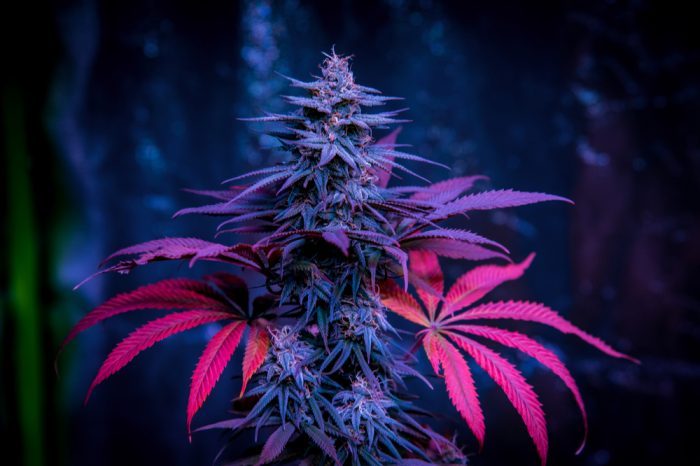Study includes cannabis in concerns over pain management and drug abuse.
Pain sufferers are in a tough spot. On the one hand, people in constant pain have a low quality of life. On the other hand, when they take medicine, they’re shamed by professionals for equating pain management and drug abuse.
A new study, published in the American Journal of Psychiatry (2020), by researchers at Columbia University, sheds stark light on the paradox afflicting pain patients. The research found chronic pain sufferers are more likely to over-consume cannabis than pain-free counterparts.
Lead author Deborah Hasin, a professor of epidemiology in the Department of Psychiatry at Columbia University Vagelos College of Physicians and Surgeons, warned that the trend is growing. In a press release, she said, “Despite this evidence, many people view cannabis use as harmless, and non-medical use of cannabis on a daily or near-daily basis has increased. In our study, we hoped to identify factors — such as pain — that may increase the risk of cannabis use disorder.”

The Truth About Pain and Cannabis Use Disorder
There’s no question that the brightest minds of science should be researching pain management and drug abuse. However, it’s not clear that cannabis is the problem. While some researchers seem reluctant to take the myriad benefits of cannabis seriously, many are confident in the reality of cannabis use disorder even though it remains a contentious issue.
Cannabis use disorder, also called cannabis addiction, first gained legitimacy when it appeared in the 2013 edition of the Diagnostic and Statistical Manual of Mental Disorders (commonly called the DSM). It is loosely defined, and often occurs in patients who exhibit other issues, such as borderline personality disorder or alcohol use disorder.
According to the experts, a person suffers from cannabis use disorder if their consumption of cannabis damages other parts of their life. Or, if they consume more cannabis than recommended and have trouble stopping consumption.
The vagueness of the description is likely down to the newness of cannabis use disorder. Also it has yet to go under the microscope as thoroughly as some other diseases. Still, the hazy definition and indistinct symptoms can make it seem less real. Wouldn’t the same definition be suitable for the over-use of caffeine or over-consumption of sugar?
For the curious, neither sugar addiction nor caffeine addiction appear in the DSM, despite the raft of evidence showing that both are addictive and destructive (although caffeine withdrawal and caffeine overdose do appear).
 The Cycle of Pain Management and Drug Abuse
The Cycle of Pain Management and Drug Abuse
But while sugar and caffeine merely make people obese, depressed, jittery, angry, spasmatic, causing heart problems and early death, there are other serious issues for public health.
The problem is a vicious pattern that often starts out innocently. A person gets hurt and tries to stop the pain through medical or chemical means — opioids, cannabis, alcohol, etc. When the pain doesn’t end, the patient ups their dosage in chasing relief, and in some cases this leads to addiction.
The opioid epidemic has ravaged America and stolen thousands of live — many of which only sought relief from pain, but wound up addicted. As drug companies continue to push doctors toward prescribing opioids, many found relief in cannabis without the problems stemming from opioid addiction.
But the Columbia research begs the question: Is cannabis better? Does it cause the same number of addiction and over-use problems, and are those problems better or worse?
Opioids vs. Cannabis for Pain
It’s potentially an understatement to say cannabis is safer. Still, the DSM estimates about nine percent of cannabis consumers will develop a substance abuse problem that negatively impacts their life. Most of these are single, young men with pre-existing psychological struggles and a lack of education. This stat is between one-half and one-third of people who abuse prescription opioids (twenty to thirty percent of develop an abuse problem).
And while cannabis use disorder can lead people toward depression and social isolation, opioid abuse leads to chemical dependence and often death. Interestingly, cannabis use disorder may be successfully managed by Cannabidiol. Research shows that CBD is amazingly effective at downgrading the effects of THC.
While subjective, it’s also fair to say that cannabis may be more beneficial that opioids for some types of pain. For example, studies published in Current Pain and Headache Reports (2015)[1]Jensen, B., Chen, J., Furnish, T. et al. (2015). Medical Marijuana and Chronic Pain: a Review of Basic Science and Clinical Evidence. Current Pain Headache Rep 19: 50. … Continue reading and the Journal of Pain (2013) found that cannabis beats out opioids when it comes to stopping nerve pain.[2]Wislsey, Barth et al. (2012). Low-Dose Vaporized Cannabis Significantly Improves Neuropathic Pain. The Journal of Pain. vol 14, Issue 2, 136-148: https://doi.org/10.1016/j.jpain.2012.10.009
Add to that the laundry list of anecdotal stories from this who use cannabis to manage suffer from chronic pain. One day research will validate these personal stories, and in doing so, provide more information on dosing and chemovar recommendations.

Do Pain Patients Consume too Much Cannabis?
Pain may result in patients consuming too much cannabis. Over-consumption of pills and alcohol is also common among people who suffer from chronic pain. It is a very difficult way to live. And the need for some relief motivates behaviors that may lead to addiction.
Among the three (cannabis, alcohol, pain pills), cannabis has the lowest addiction profile. It also has the greatest probability for maintenance of employment and relationships. This is not to say it is acceptable to over-consume cannabis, only that is least likely to result in irreversible harm or death.
It is important for these researchers to continue to probe the science behind pain management and drug abuse. But, in the meantime, cannabis is often prescribed as a part of harm reduction protocol for pain patients. It allows them to reduce opioid prescriptions and, for some, eliminates the need for opioids altogether.
References





